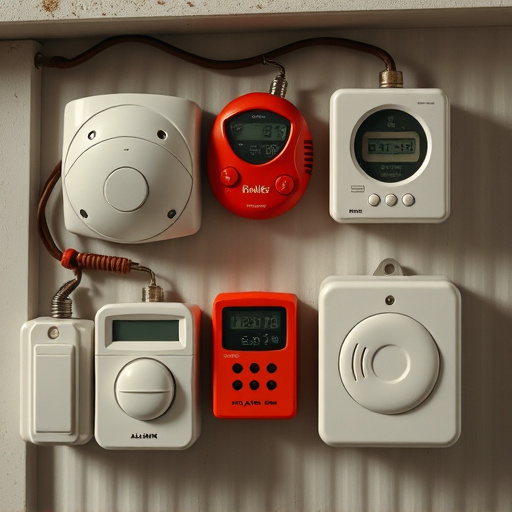Choose a personal alarm with a powerful (105-120 dB), high-pitched sound for maximum deterrence and attention, and a reach of 100-500 feet for signaling help safely. Prioritize water resistance, durability, ease of activation, and portability for reliable personal safety in any scenario. Regularly test batteries and practice activations to ensure swift, effective use.
In today’s world, personal safety is paramount, especially during emergencies. This article explores essential devices designed to protect you when help is not immediately available. We delve into understanding the significance of personal safety devices, examining key components that make an effective alarm system. Factors like choosing the best alarm sound and distance are crucial for maximum impact. Discover real-world applications and best practices to ensure your safety in critical situations.
- Understanding Personal Safety Devices in Emergencies
- Key Components of an Effective Personal Alarm
- Factors to Consider When Choosing Alarm Sound and Distance
- Real-World Applications: Best Practices for Personal Safety
Understanding Personal Safety Devices in Emergencies
Personal safety devices are invaluable tools designed to ensure your well-being during unexpected emergencies. These compact and often discreet gadgets are engineered to attract attention, alert others, and potentially deter dangerous situations. One key aspect to consider when choosing a personal safety device is the best personal alarm sound – loud enough to startle an assailant but not so harsh as to cause panic among bystanders.
Additionally, distance is a critical factor. The ideal device should emit a signal strong enough to reach help or alert authorities from a safe distance, typically ranging from 100 to 500 feet, depending on the environment and conditions. With these considerations in mind, users can select personal safety devices that offer both effectiveness and peace of mind, enhancing their ability to handle potential threats swiftly and efficiently.
Key Components of an Effective Personal Alarm
When considering a personal safety device, such as an alarm, the primary focus should be on its effectiveness in emergency situations. Key components that contribute to this include sound quality, distance coverage, and ease of activation. The best personal alarm sound should be loud and high-pitched, designed to startle potential assailants and attract attention from nearby individuals or authorities. Distance is equally crucial; an alarm with a range of 100 decibels or more can ensure your distress signal reaches help quickly, even in noisy environments or over distances.
Additionally, the alarm should be easily activated, whether through a simple button press or a pull-tab mechanism. Lightweight and compact designs that fit comfortably on your wrist, neck, or belt are ideal for easy portability. Features like water resistance and durable construction further enhance their reliability in various conditions, ensuring you stay safe during outdoor activities or unexpected incidents.
Factors to Consider When Choosing Alarm Sound and Distance
When selecting a personal safety device, one of the critical factors is the alarm sound and its distance reach. The best personal alarm sound should be loud enough to startle an assailant and attract attention from nearby bystanders or emergency services. High-decibel alarms, typically ranging from 105 to 120 decibels, are recommended for maximum effectiveness. This volume level is comparable to the noise of a power tool or a fire alarm, ensuring that it will be hard for an attacker to ignore.
Moreover, considering the distance at which the alarm can be heard is vital. Personal alarms designed for outdoor use or in large spaces should have a longer range, often up to 100 feet or more. This feature allows users to activate the alarm from a safe distance, giving them time to escape and alert others. In contrast, personal alarms for indoor use might have a shorter range, around 50-75 feet, which is suitable for home or office environments where the risk of an attacker approaching closely is lower.
Real-World Applications: Best Practices for Personal Safety
In emergency situations, personal safety devices like alarms can be life-saving tools. When choosing the best personal alarm, consider its sound intensity—a powerful, high-pitched whistle is more likely to attract attention and deter potential threats. Distance is also crucial; ensure it has a range that allows for effective activation even from a considerable distance.
Best practices for personal safety involve learning how to use these devices effectively. Practice activating the alarm from various positions to familiarize yourself with its reach. Keep your device easily accessible, either on your person or in close proximity, so you can react quickly. Regularly test batteries and ensure the alarm is always operational, as every second counts during an emergency.
Personal safety devices, particularly effective personal alarms, are essential tools in emergency situations. By understanding key components like loudness (best personal alarm sound) and range (alarm sound distance), individuals can make informed choices to ensure their well-being. When selecting a device, consider real-world applications and best practices for optimal effectiveness. Choosing the right combination of sound and distance can provide crucial time and peace of mind in emergencies.
